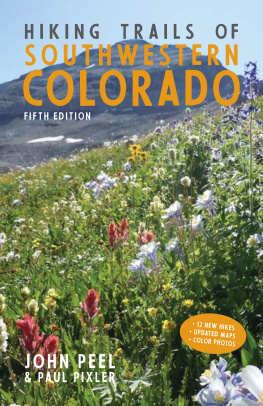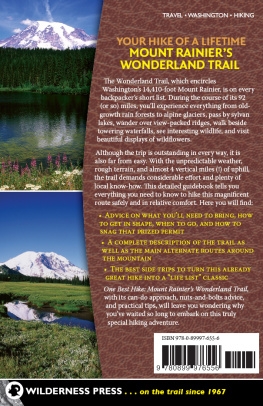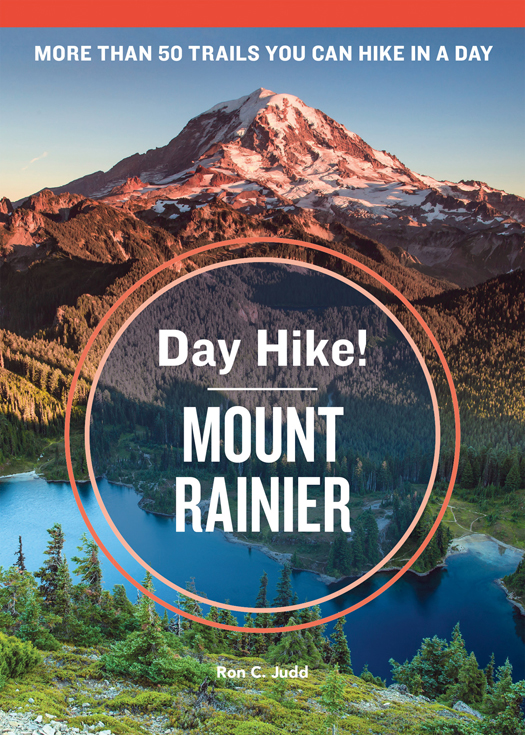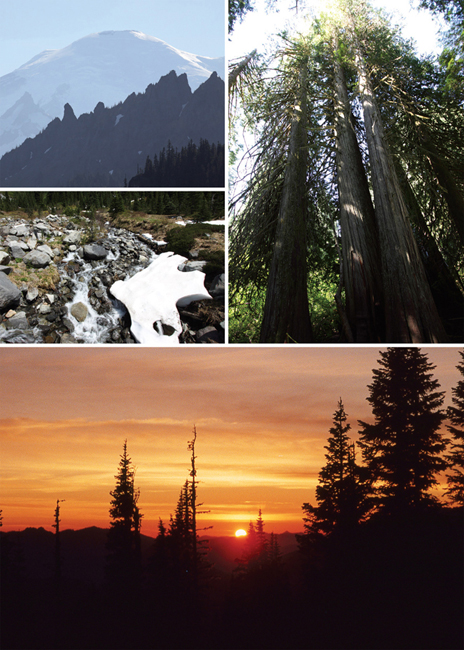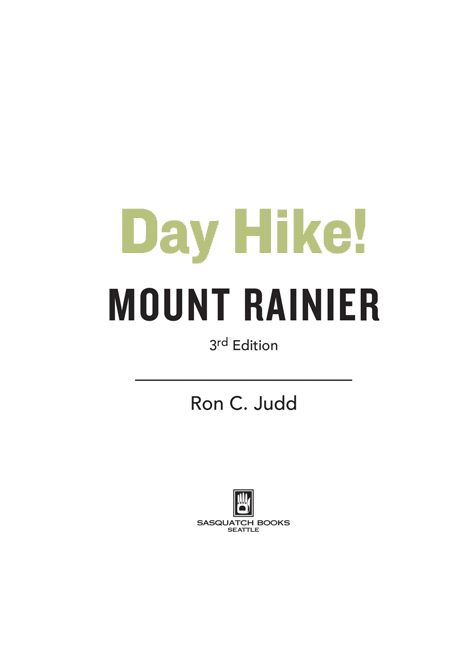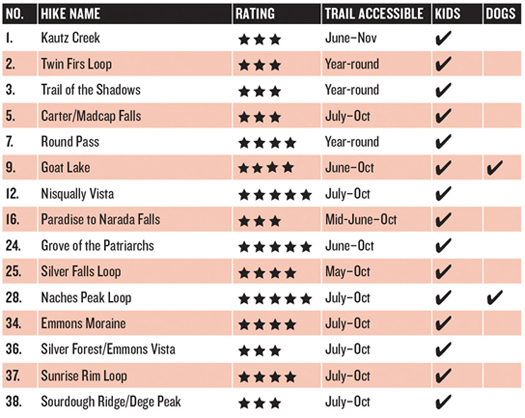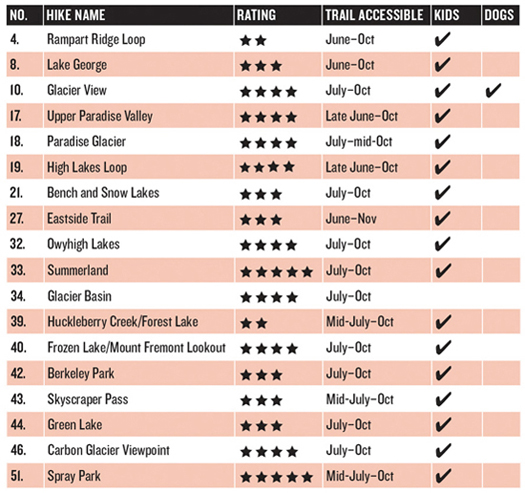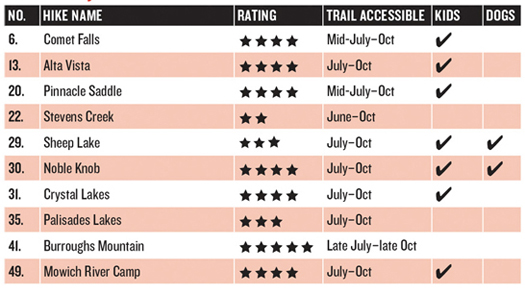Copyright 2002, 2009, 2014 by Ron C. Judd and Seabury Blair Jr.
All rights reserved. No portion of this book may be reproduced or utilized in any form, or by any electronic, mechanical, or other means, without the prior written permission of the publisher.
Published by Sasquatch Books
Cover photograph: Jerry Sanchez
Cover design: Hillary Grant/Joyce Hwang
Trade Paperback Interior Design: Andrew Fuller/Anna Goldstein
Trade Paperback Interior Composition: Cory Foster
Interior photographs: Ron C. Judd and Seabury Blair Jr.
Maps: Marlene Blair
Library of Congress Cataloging-in-Publication Data is available.
eBook ISBN: 978-1-57061-924-3
Trade Paperback ISBN: 978-1-57061-923-6
IMPORTANT NOTE: Please use common sense. No guidebook can act as a substitute for experience, careful planning, the right equipment, and appropriate training. There is inherent danger in all the activities described in this book, and readers must assume full responsibility for their own actions and safety. Changing or unfavorable conditions in weather, roads, trails, snow, waterways, and so forth cannot be anticipated by the author or publisher, but should be considered by any outdoor participants. The author and publisher will not be responsible for the safety of users of this guide.
Sasquatch Books
1904 Third Avenue, Suite 710
Seattle, WA 98101
(206) 467-4300
www.sasquatchbooks.com
v3.1
CONTENTS
HIKES AT A GLANCE
Easy
Click to view the details
Moderate
Click to view the details
Moderately Difficult
Click to view the details
Difficult
Click to view the details
Extreme
Click to view the details
ACKNOWLEDGMENTS
The 3rd edition of this guide is dedicated to the memory of my late father, Ronald Lewis Judd, who loved to camp, photograph, and hike at Mount Rainier. He put the outdoors bug in me as an infant and I am forever grateful. Thanks also to MJ, my inspiration in the woods and out, and longtime trail buddy and Rainier-ophile Elliott Almond, for keeping me going. And as always, thanks to everyone who loves Mount Rainier enough to keep it special, because it truly is.
Ron C. Judd
MOUNT RAINIER
Mount Rainier: Yeah, youve seen it.
But have you really seen it?
Maybe thats not the right word. You cant really say youve experienced one of North Americas most stupendous peaks until you get to know the place intimately. And to know Rainier is to leave its congested parking lots and enter its wild spots, shake hands with its evergreens, breathe its crisp air, smell its wildflowers, and soak your aching feet in its cool streams.
These are all things, fortunately, that can be done easily, without venturing very far down any one of Mount Rainier National Parks 240 magical miles of maintained trails.
We emphasize here the word easily. One of the great misperceptions of the mountain local natives call Tahoma is that you have to be in Everest shape to partake of its 228,000 acres of pristine wilderness. This is understandable: Just look at the thing. The mountain is huge, forbidding, and rough-hewn. Since Rainier truly is an exposed, vertical being, much of its land is very rugged, and the terrain from its shoulders on up requires the kind of backcountry know-how you cant get by walking around Seattles Green Lake a half-dozen times a year.
But all around this mountains waistline, magic awaits. Alpine meadows too beautiful to be real. Sprawling snowfields; stunning views. Old-growth trees, bigger than your house. Liquid-crystal rivers. Box canyons. Two dozen of the most massive glaciers on the continent. Ample wildlife.
You can see some of it without ever getting 50 feet from your car. But you cant really see it until youre in it, and the bestand onlyway to get there at Mount Rainier is by foot, down a path.
Thats a simple lesson we learned anew by researching this guide, which aims to bring to life fifty-one of the greatest walking paths in the Northwest, if not the nation, for Rainier visitors who get to the mountain once a week or once in a lifetime.
They range from the awesomeand occasionally dangerousalpine trek to Camp Muir above Paradise to a placid, universally overlooked path winding through old-growth forest west of Longmire. Most of the trails fall somewhere in between, and all of them remind us of a delightful fact often overshadowed by the mountains sheer size: You can get out in Mount Rainier National Parkreally out, in the memory-of-a-lifetime kind of waywithout committing a week of your life or ten years wear and tear on your knees.
Almost all the hikes listed in this guide can be undertaken by the average its-a-sunny-Sunday-morning-lets-do-something-grand hiker. Granted, some are steep, and hiking above 5,000 feet will leave the unconditioned flatlander huffing and puffing (take your time and hydrate; youll adjust). Proper preparation and attention to weather, snow levels, and other factors are important. But the fact remains that Mount Rainier National Park presents a rare opportunity for both visitors and residents. Perhaps nowhere in the world is such a unique alpine environment within such close reach of a major metropolitan area.
This explains the crowds that plague the park on summer weekendsand threaten to make todays unfettered auto access to park attractions and trailheads a thing of the past. More than two million people visit the park each year, with the vast majority landing there on summer weekends.
Being park consumers in the same way you are, weve kept that in mind in preparing this guide, attempting to warn you away from the worst overcrowdingand suggesting alternatives to popular trails when theres simply no way you can get to the park except on that same sunny August weekend with everyone else.
One of the more profound findings in our summer-long trek through the park, however, was how easily solitude or near-solitude could be attained by walking more than a couple miles from some of Rainiers most overcrowded tourist haunts. Pick a trail from the guide, follow it as far as you will, and find out for yourself. You just might discover something about a place you thought you knewand about yourself.


